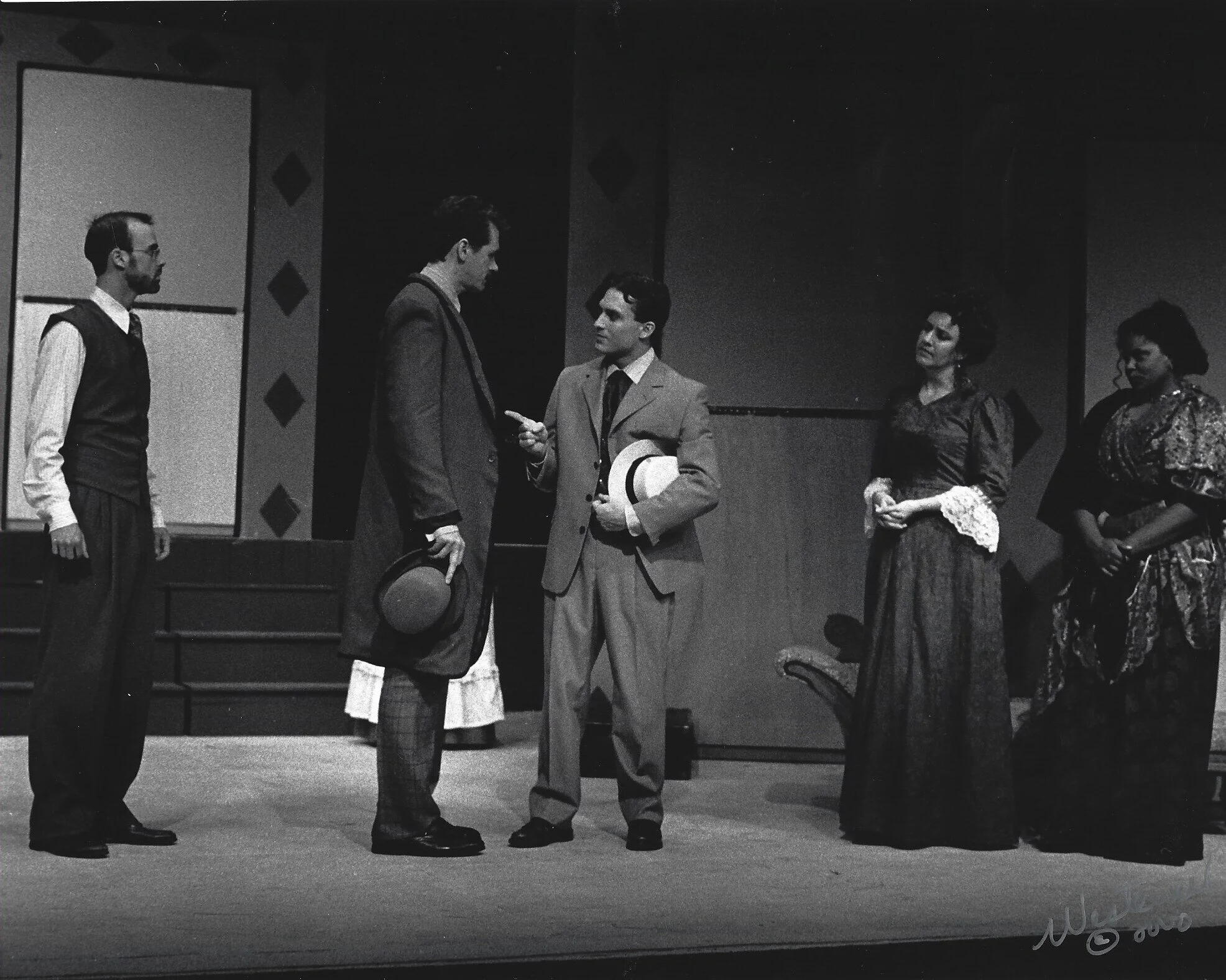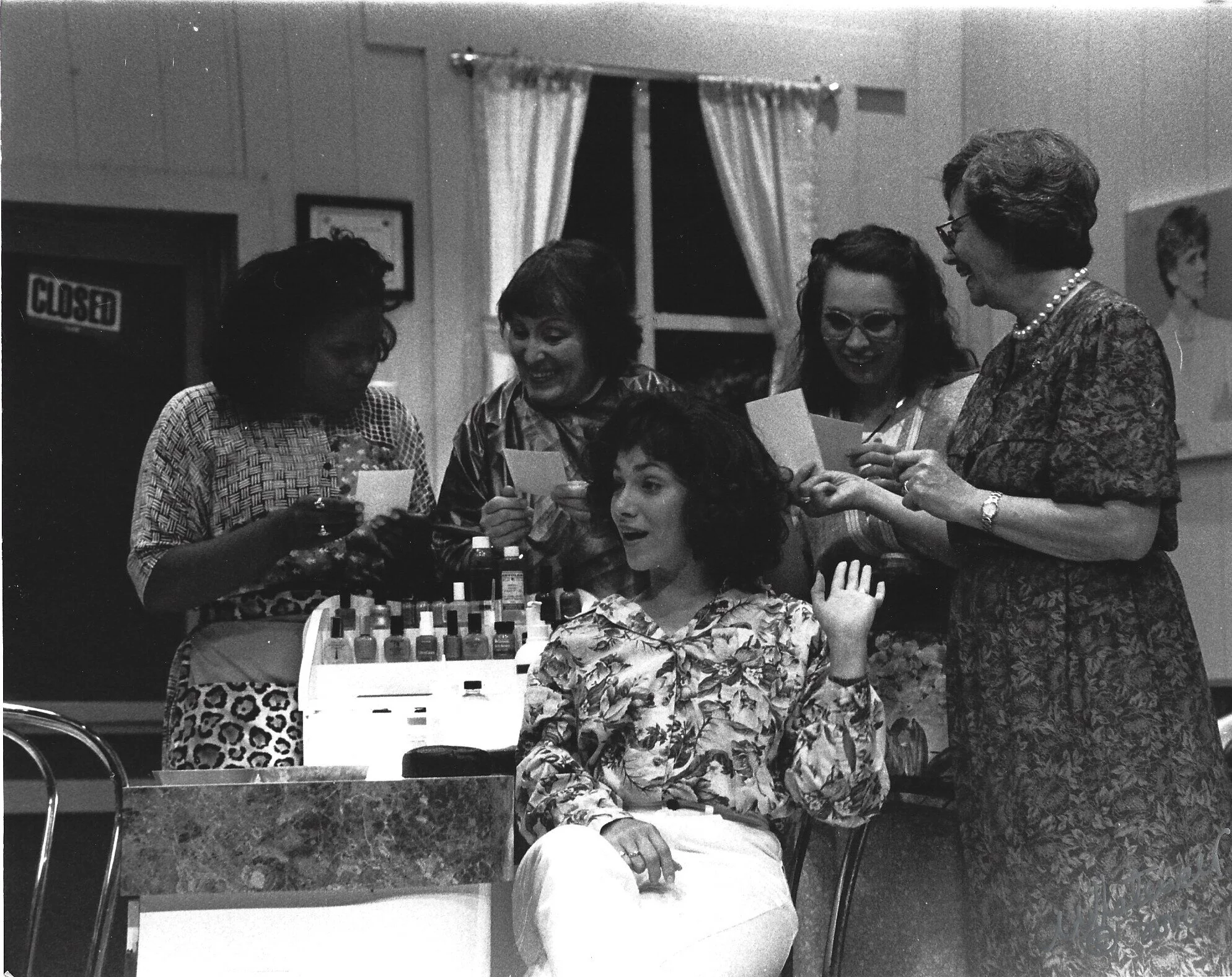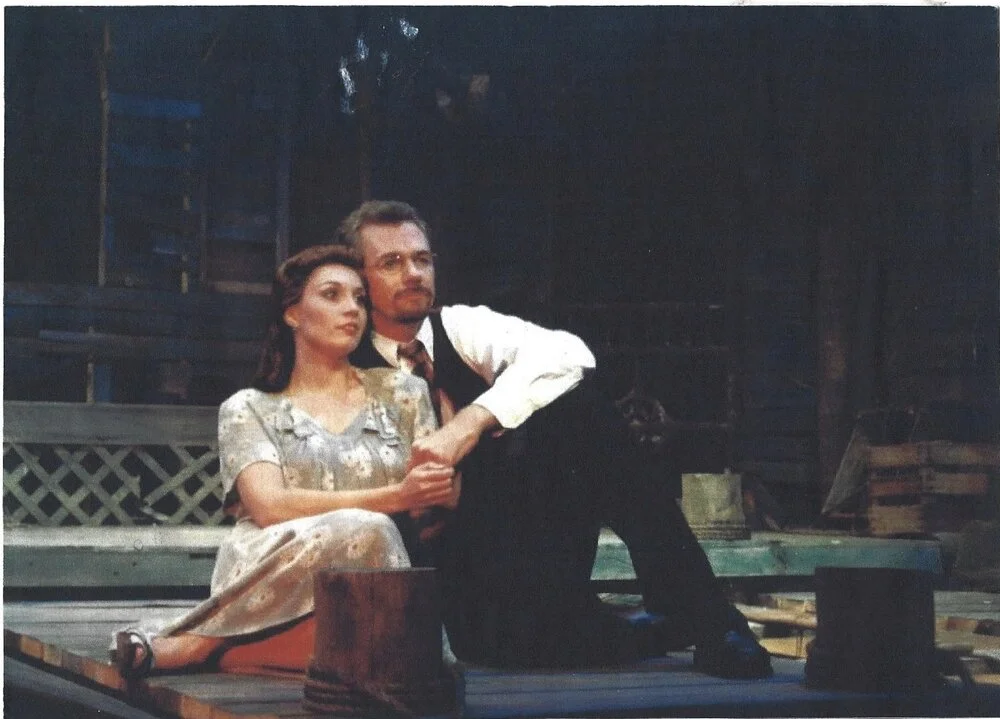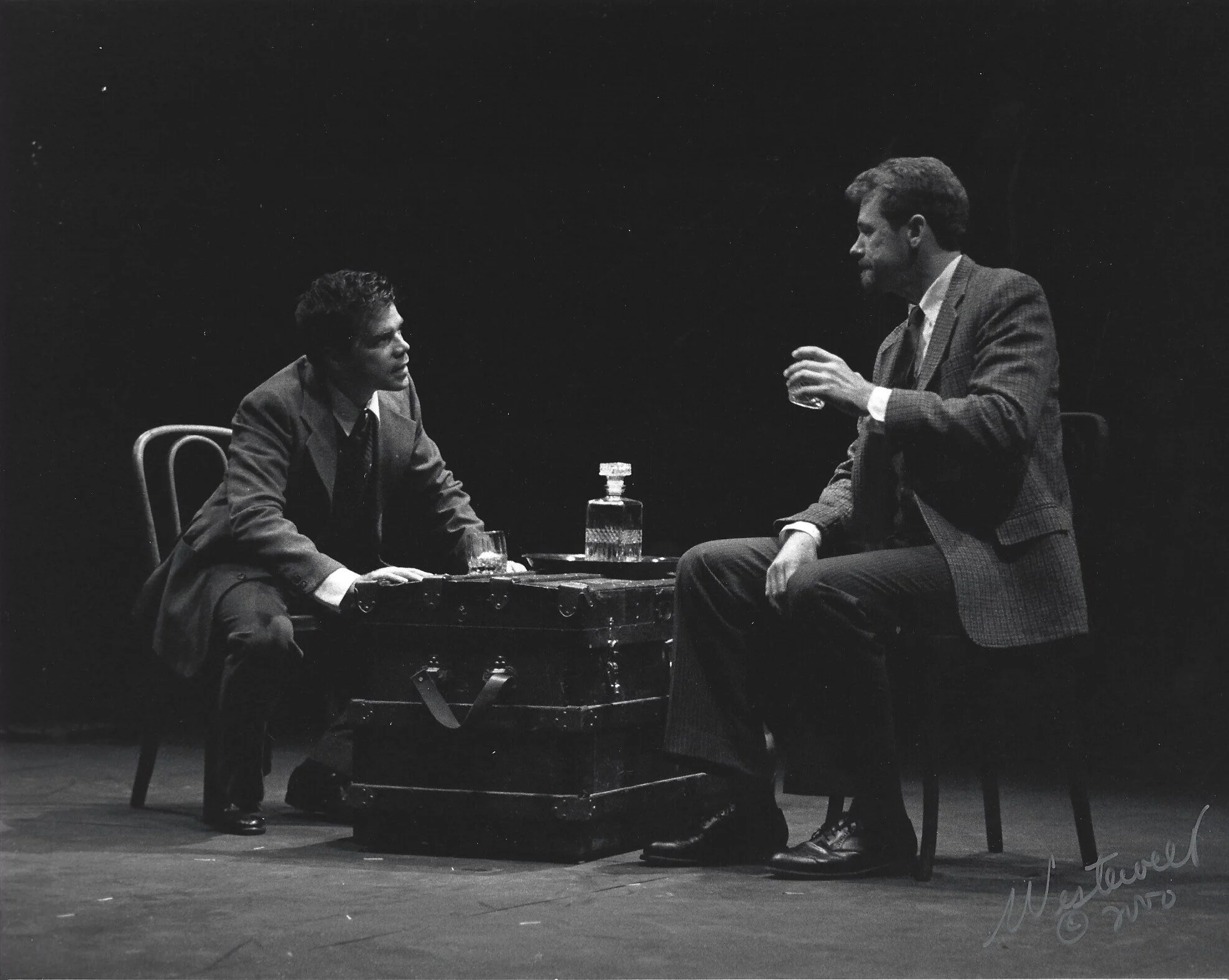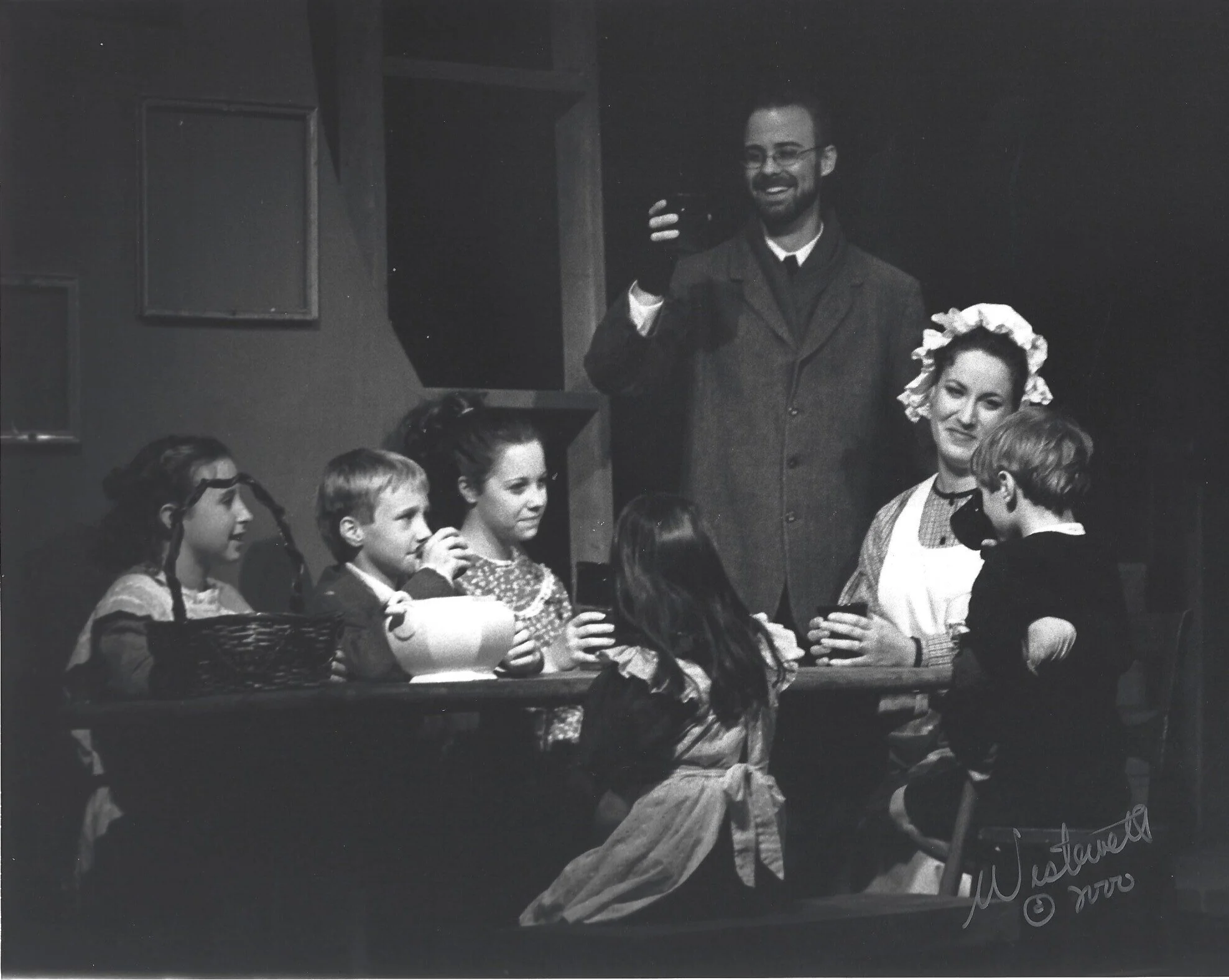Warner Crocker: 2000
Early in 2000, Linda McCarty interviewed Warner Crocker about his first year as Wayside’s Artistic Director. Crocker commented, “It gets lonely around here for a while during this time of year,” referring to the theatre being dark with no rehearsals or performances taking place. He added that, after taking stock of the 1999 season, “I’m very pleased with the response to our work,” adding that the biggest disappointment for 1999 was that ticket sales had not been as high as he had been hoped. In retrospect, Crocker added that starting off the season with Measure for Measure “might have intimidated people a little bit.” He also observed that the audience base is split. “Some people want us to be a house of entertainment and others want us to do more adventurous programming.” He concludes, “I think Wayside Theatre can be and do both” (McCarty. “Artistic Director Takes ….” TWS. 12 Jan. 2000).
Early in 2000, a residence on Middletown’s main street that was used by the theatre to house visiting actors, was destroyed by fire. This tragic event added an extra burden to the Theatre’s operations, as everything in the house was lost - - bedding, towels, furniture, TV. This loss placed an urgent need on the Theatre to find housing before actors and crew would arrive to begin the summer season.
As an experiment, Wayside offered a Winter Season of staged readings that year that were scheduled on weekends, one each month from January through April. Readers were selected from the Theatre staff, from the Board of Directors, as well as individuals from the area who might be interested in taking part. (SEE: Appendix: Readers Theatre)
Matchmaker. June 4 - July 1, 2000. William Diggle (L), John Alcott, Jason Bruffy, Barbara Pinolini, Tracey Copeland,
Wayside opened the 2000 season with Matchmaker. Records do not indicate if opening night began with a dinner prior to curtain at the Wayside Inn or if the traditional march from the Inn, down Main Street to the Theatre, took place. Nevertheless, the season opened on schedule. Two strong actors who had appeared on Wayside’s stage the previous year, Tracey Copeland and John Alcott, played the two leads. Some reviewers thought they were made for these roles, others thought they were weak. There were also differing opinions on the two clerks, Cornelius and Barnaby. Some applauded their antics, others condemned their ‘Gosh, I’m funny’ portrayal (Lawrence. “Mother of Dolly ….” CN. 22 June 2000). The costumes were praised with one reviewer commenting that the set consisted of “a series of rotating panels that evoke the various locales” (Horan. “ ‘Matchmaker’ is entertaining ….” NVD. 6 June 2000).
Steel Magnolias, July 9 - Aug. 5, 2000. Tracey Copeland (L), Ilona Dulaski, Thomasin Savaiano Mary Suib, Marni Pennng.
The season’s second title was the ever popular, Steel Magnolias, which first appeared on Wayside’s stage in 1990 and was again repeated during the 2011-2012 season. For this production, the set was immediately noted as transforming the Wayside stage into a full fledged boutique “complete with a working shampoo station … the smell of hairspray” making “the design … feel even more realistic” (Campbell. “You’ll laugh, ….” TWS. 11 July 2000). Each of the actresses portrayed very believable characters, but it was felt that Barbara Pinolini displayed the widest range of emotions while still engaging in beauty shop frivolity. Crocker is given credit for “molding the actors into a smooth affectionate ensemble that shows each of the actors to advantage” (Horan. “ ‘Steel Magnolias’ actors ….” NVD. 11 July 2000).
All I Really Need to Know I Learned in Kindergarten. Aug. 13 - Sept. 9, 2000. Ilona Dulaski (L), Rob Lindley, Thomasin Savaiano, Richard Follett, James Laster.
One could ask if Wayside’s next offering, All I Really Needed to Know I Learned in Kindergarten, was a play or merely a “series of monologues and skits dissecting the basic building blocks of life.” After asking that question, the reviewer credits the five member cast and a keyboard player/narrator for using their “professional skills and make it look easy to pull off the unsophisticated qualities of the script” (Campbell. “ ‘All I Really Need to Know’ ….” TWS. 15 Aug. 2000). Simplicity in costumes, sets and lighting allowed for the emphasis to be on the actors, all of whom blend together, but “manage to display touches of individuality” (Horan. “Fulgham’s popular lists …. NVD. 15 Aug. 2000).
Talley’s Folly. Sept. 17 - Oct. 7, 2000. Thomasin Savaiano, John Alcott.
Tally’s Folly had won over Wayside audiences when it was performed in 1983. As the 2000 season’s next offering, it was a real change of pace – a play lasting 97 minutes with no intermission performed by two actors, both of whom were well known to Wayside audiences. The set was unique - - a run-down boat house complete with old ropes and a rotting boat, accompanied by sounds of nature and the trickling of water, lighted to give the impression of early evening. Both actors were praised for their work portraying a “well-matched but culturally different couple …. The intellectual and emotional chemistry is strong and believable” (Lawrence. “ ‘Tally’s Folly’ ….” CN. 1 Oct. 2000). Another notes the performance of a “Jewish accountant from St. Louis, who is intent on wooing Sally Talley, a young Christian woman from the Ozarks, … and how the play’s blissful end [comes when] the couple realizes that they are more alike than they seem and are a perfect match for each other” (Campbell. “ ‘Talley’s Folly’ ….” TWS. 19 Sept. 2000).
The Woman in Black. Oct. 15 - Nov. 11, 2000. Jefferson Arca, John Alcott
Talley’s Folley was followed by another two-person work, The Woman in Black, again featuring John Alcott. Playing opposite Alcott was Jefferson Arca, making his Wayside debut. While the acting was excellent, all reviewers credit the play’s success to the almost bare set and with the “well placed and timed flow of light movement, the play was able to maintain its scary integrity” (Birchenall “Wayside presents ‘The Woman ….’ ” Fauquier Times). 18 Oct. 2000). Commenting on this wonderful play for Halloween, one reviewer states, “The director’s pacing and careful layering of suspense, event by event, plays us like a fisherman with a trout … until we’re hooked and caught. What fun!” (Lawrence. “ ‘The Woman in Black.’ ” CN. 19 Oct. 2000).
A Christmas Carol. Nov. 29 - Dec. 24, 2000. Bill Diggle, standing.
A Christmas Carol was again the closing play for the year. And, for this production, all roles were double-cast which permitted some variety in every performance, as the cast was never completely the same. The script was basically the one used in previous years although instead of the narrative being given by Scrooge’s nephew, it is spread around among various cast members. The double casting also gave variety to each character, particular seen in the actors playing Scrooge: Alcott being 42, and Laster was 66. Regardless of who was playing which character, A Christmas Carol brought the season to a successful close.
